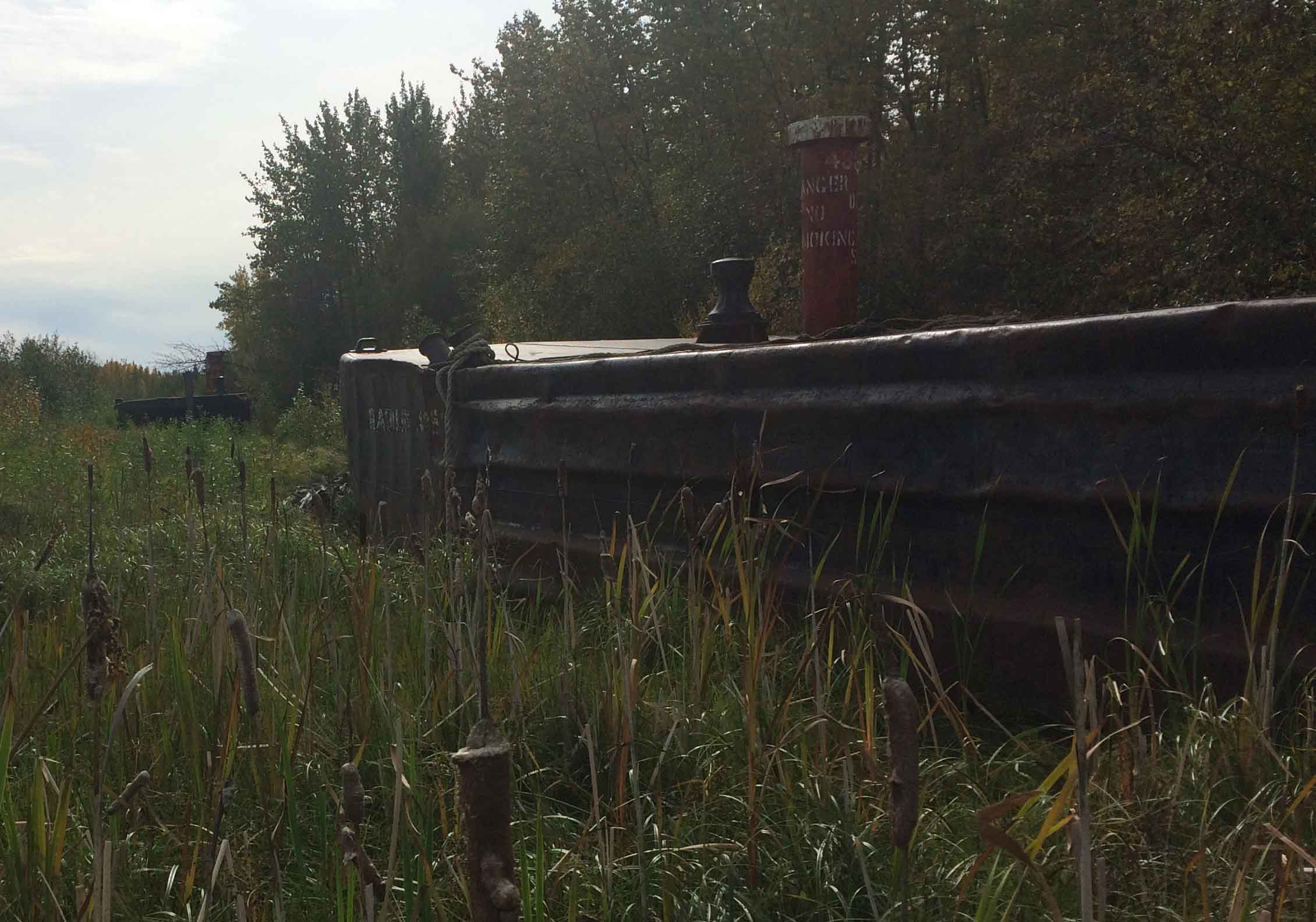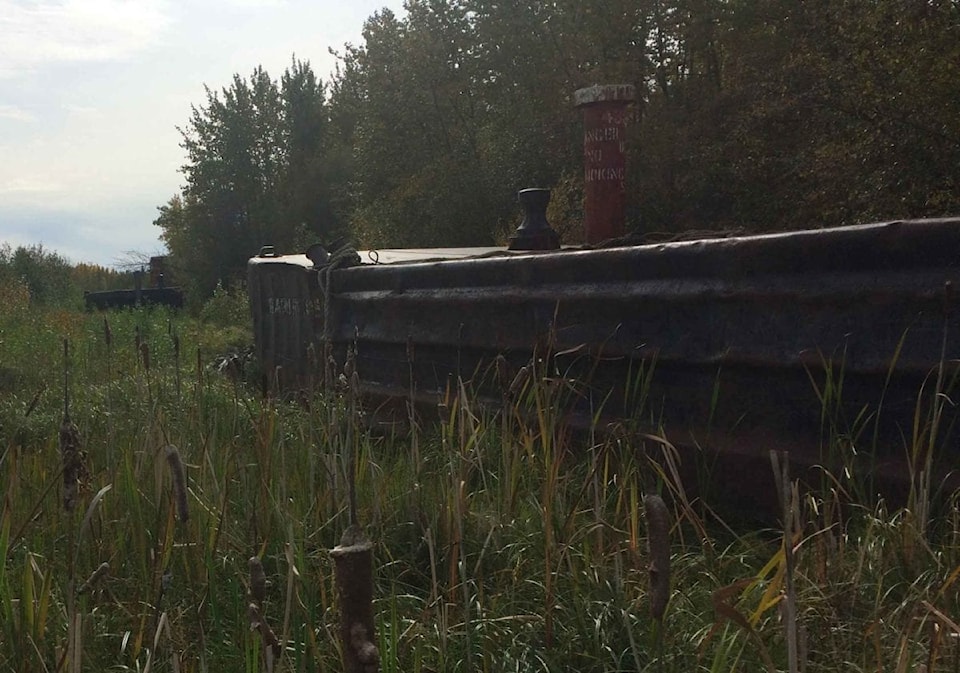
Photo courtesy of K'atlodeeche First Nation
A project to remove six old barges from an island in the Hay River has been delayed.
The work was planned under an agreement between the GNWT and K'atlodeeche First Nation (KFN).
Peter Redvers, the lead for negotiations and consultation with KFN, said he contacted the GNWT's Marine Transportation Services (MTS) on April 3 to check on the status of the project, and was told that manpower shortages associated with COVID-19 had put the project on hold.
"Under the circumstances, given that we're close to breakup, it may not happen this year," Redvers said of the project.
The barges, which have been out of service for many years, are on Hay River Reserve land – Ndula Island, which is also known as Island A.
According to information provided in March by a spokesperson for the Department of Infrastructure, construction of an access road to the barges would have been required to allow equipment into the area to remove the barges while there is still snow on the ground and the river is frozen.
The barges were to be scrapped once removed.
Ndula Island is near the Old Village of the reserve.
Redvers explained that, when the Hay River Reserve was created in 1974, the defunct Northern Transportation Company Ltd. got a permit from the federal government to overwinter barges by tying them to the island.
"But what's happened over time with the sedimentation and ice break and all those kinds of things, one, the channel there has narrowed," he said in March. "Secondly, there's a few of the barges that have actually become landlocked. In other words, they're no longer in the water. The ground has in essence grown up around them."
The GNWT – through Marine Transportation Services – now holds the permit to tie barges to the island.
Redvers said KFN raised concerns over a year ago with MTS about the barges basically being abandoned on reserve land and the obligation of the government to remove them.
"So we've been working co-operatively with MTS for about a year now to figure out how best to do it," he said.
Redvers said the original plan of MTS was to float the barges off the island when the water rose during spring breakup, but water levels haven't risen that much in recent years.
Plus, he noted that pulling the barges off the island in the summer using powerful tugboats would do quite a bit of environmental damage, which MTS itself recognized.
The spokesperson for the Department of Infrastructure said there are no environmental concerns about the barges.
However, Redvers said they will eventually rust if not removed and there may be residual fuel inside.
"At some point they have to move," he said. "They can't stay there forever."
